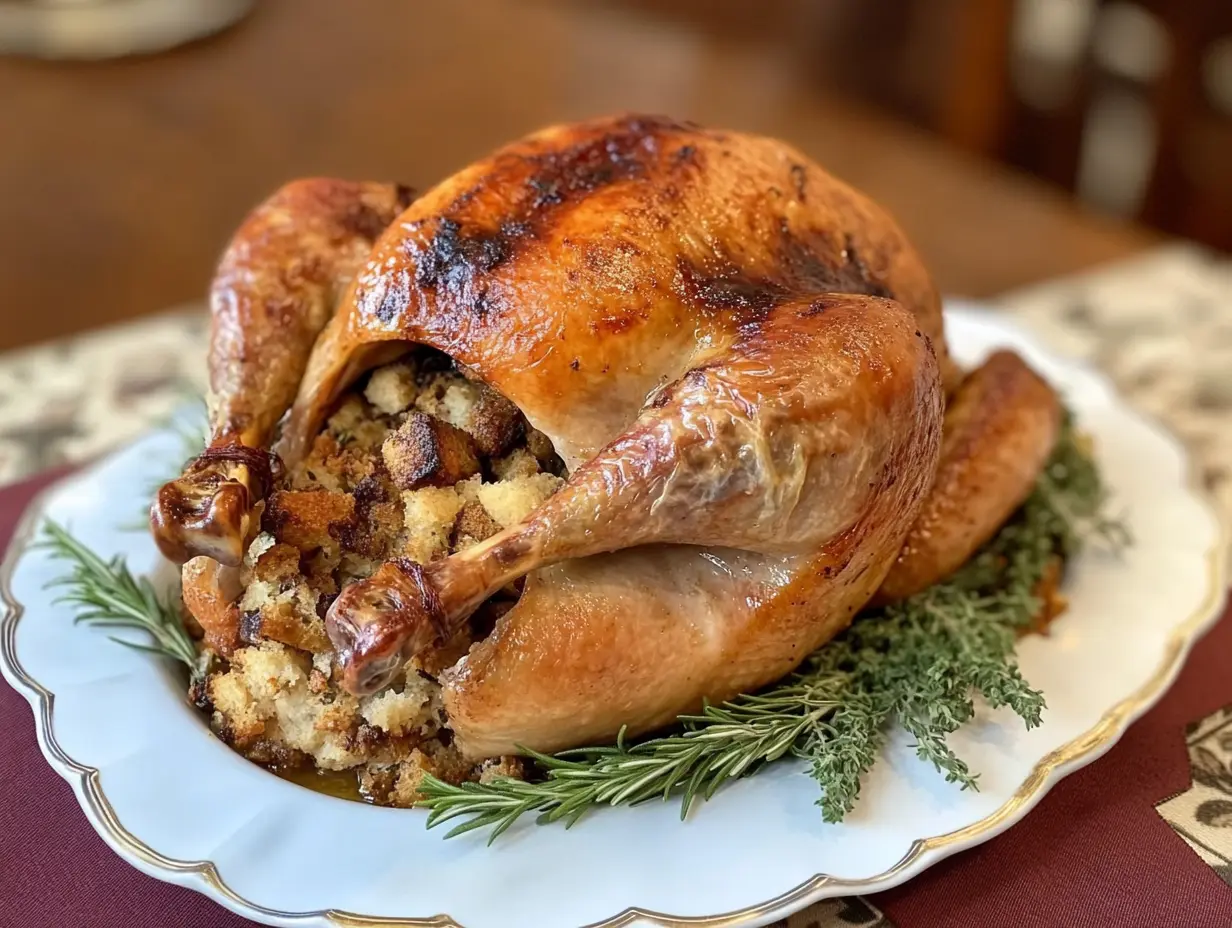Understanding what is the difference between stuffing and dressing requires examining their preparation, regional usage, and culinary distinctions. Both dishes are staples of holiday feasts, but their preparation methods and cultural preferences set them apart. Stuffing is traditionally cooked inside the bird, absorbing flavorful juices, while dressing is baked in a separate dish, often yielding a crisp texture. This guide explores the historical origins, preparation styles, and regional influences that shape these beloved side dishes.
The Origins of Stuffing and Dressing

Where Did Stuffing Come From?
Stuffing has an ancient history that spans cultures across the globe. The earliest recorded instances date back to Ancient Rome, where cooks used bread, spices, and nuts to enhance poultry. Its practical purpose was to retain moisture in the meat while imparting additional flavor.
- Stuffing recipes were documented in early Roman texts like “Apicius.”
- Ingredients often included a mix of stale bread, herbs, and even fruits.
Today, the term “stuffing” is synonymous with a dish placed inside the cavity of poultry, capturing drippings during roasting.
How Did Dressing Emerge?
Dressing gained prominence during the Victorian era in the United States. Politeness norms of the time deemed “stuffing” too crude a term. Instead, “dressing” was adopted to describe a similar dish cooked outside the bird.
- Dressing became a Southern tradition, often featuring cornbread instead of white bread.
- It reflected regional culinary preferences while maintaining a refined terminology.
The transition from stuffing to dressing was as much cultural as it was culinary.
Key Differences in Preparation
Cooking Location
The most notable distinction in what is the difference between stuffing and dressing lies in their cooking locations:
- Stuffing: Cooked within the cavity of the bird.
- Dressing: Prepared in a separate baking dish.
Stuffing absorbs juices from the poultry, adding depth to its flavor, while dressing offers versatility by allowing additional crispiness through oven baking.
Ingredients
While their bases are often similar, the regional variations set them apart:
- Stuffing Ingredients:
- Stale bread or bread cubes.
- Additions like sausage, nuts, or dried fruits.
- Herbs like sage, parsley, and thyme.
- Dressing Ingredients:
- Cornbread as a staple in Southern-style dressing.
- Milk or eggs for moisture.
- Aromatics like onions and celery.
Each dish’s unique composition influences its texture and flavor.
Regional Preferences: North vs. South

Regional dialects and traditions often dictate whether you call it stuffing or dressing. In the North, “stuffing” is the common term, regardless of whether it’s cooked inside the bird. Conversely, in the South, “dressing” is preferred and typically includes cornbread.
Differences by Region:
- Northern States: Favor traditional bread-based stuffing.
- Southern States: Cornbread dressing is a holiday staple.
These distinctions are reflective of broader cultural differences in American cuisine. For more on Southern-style variations, check out this chicken dressing recipe.
Pros and Cons of Stuffing vs. Dressing
Understanding what is the difference between stuffing and dressing also involves weighing their pros and cons.
Benefits of Stuffing
- Retains moisture from the poultry drippings.
- Infuses complementary flavors into the bird.
Downsides of Stuffing
- Requires precise cooking to avoid food safety concerns.
- May extend the bird’s cooking time.
Benefits of Dressing
- Easier to control cooking times and temperatures.
- Allows for customization and crisp textures.
Downsides of Dressing
- Lacks the infused flavors of bird drippings.
- May require additional broth for moisture.
Choosing between stuffing and dressing often comes down to taste preferences and convenience.
Popular Variations of Stuffing and Dressing
Exploring what is the difference between stuffing and dressing wouldn’t be complete without highlighting their popular variations. These adaptations reflect cultural and personal tastes.
Cornbread Dressing
A Southern classic, cornbread dressing is made with crumbled cornbread, stock, and aromatics. Its crumbly texture and rich flavor are unmatched.
Sausage Stuffing
This hearty variation incorporates ground sausage for added richness. It’s a popular choice in Northern states.
Vegetarian Options
Both dishes can be adapted for vegetarians by using vegetable stock and omitting meat-based ingredients.
How to Make the Perfect Stuffing or Dressing
For those wondering how to master these dishes, keep these tips in mind:
- Choosing Bread: Opt for slightly stale or toasted bread to avoid sogginess.
- Essential Herbs: Include sage, thyme, and parsley for a classic taste.
- Perfect Texture: Add broth gradually to achieve the desired consistency.
With these tips, you can prepare a memorable dish, whether you call it stuffing or dressing.
Pros and Cons of Stuffing vs. Dressing
Understanding what is the difference between stuffing and dressing involves weighing their advantages and disadvantages. Each method offers unique qualities that cater to different tastes and preferences.
Benefits of Stuffing
Stuffing is favored for its depth of flavor, as it absorbs juices from the poultry during cooking. This method creates a moist and flavorful dish that complements the bird perfectly. Additionally, stuffing inside the bird saves oven space—a crucial consideration during busy holiday meal preparations. It is also a traditional choice, evoking a sense of nostalgia for many families.
- Infused with poultry juices, enhancing its taste.
- Saves space by cooking within the bird.
- Provides a traditional element to holiday meals.
Downsides of Stuffing
Despite its flavorful appeal, stuffing has some drawbacks. Cooking it inside the bird requires careful monitoring to ensure it reaches a safe internal temperature of 165°F, which can complicate cooking times. Undercooked stuffing poses food safety risks, making it essential to strike the right balance between the bird and the stuffing.
- Requires precise cooking to ensure safety.
- Can lead to uneven cooking if not monitored closely.
- Adds complexity to the roasting process.
Benefits of Dressing
Dressing, cooked separately in a dish, offers greater control over flavor and texture. It can be baked to achieve a crisp, golden topping while remaining moist inside. This method is versatile, allowing for variations like cornbread dressing or vegetarian options. Dressing also avoids the safety concerns associated with cooking stuffing inside the bird.
- Easier to control cooking time and temperature.
- Allows for creative variations and flavor enhancements.
- Achieves a crispy texture on the top layer.
Downsides of Dressing
While dressing is easier to prepare, it may lack the rich flavor that comes from cooking inside the bird. Additional broth or seasoning is often required to replicate the depth of flavor found in traditional stuffing.
- May lack the infused flavor of poultry drippings.
- Requires extra effort to achieve the right moisture level.
- Needs additional oven space.
Popular Variations of Stuffing and Dressing
When exploring what is the difference between stuffing and dressing, it’s essential to consider the countless variations that make these dishes so adaptable to personal and regional tastes.
Cornbread Dressing
Cornbread dressing is a Southern favorite, known for its rich and slightly sweet flavor. It typically includes crumbled cornbread, onions, celery, and sage, mixed with broth for moisture. This variation is baked to golden perfection and pairs well with roasted turkey or ham.
Sausage Stuffing
Sausage stuffing adds a hearty and savory twist to the classic dish. Ground sausage is combined with bread cubes, onions, and herbs to create a rich, flavorful stuffing that’s perfect for meat lovers. This variation is particularly popular in the northern United States.
Vegetarian Options
Vegetarian stuffing or dressing swaps meat-based broths for vegetable stock and skips sausage or other meats. Mushrooms, dried fruits, nuts, or even lentils can be added for texture and flavor. These options ensure everyone at the table can enjoy this holiday staple.
- Use vegetable stock for moisture.
- Add mushrooms or nuts for depth.
- Consider dried fruits for a sweet contrast.
How to Make the Perfect Stuffing or Dressing

Perfecting what is the difference between stuffing and dressing involves understanding the key elements that contribute to their success. From choosing the right bread to achieving the ideal texture, these tips will help you master these dishes.
Choosing the Right Bread
The choice of bread is crucial for the base of your stuffing or dressing. Slightly stale or toasted bread cubes work best, as they absorb broth without becoming soggy. Popular options include sourdough, white bread, or cornbread, depending on your regional preference.
- Stale bread absorbs liquid without breaking down.
- Sourdough adds a tangy flavor.
- Cornbread creates a Southern-style dish.
Essential Herbs and Spices
Herbs and spices define the flavor profile of stuffing and dressing. Classic choices like sage, thyme, and parsley pair beautifully with the rich, savory notes of the dish. Adding garlic or a pinch of nutmeg can elevate the flavor further.
- Sage and thyme are classic choices.
- Parsley adds freshness.
- A touch of garlic enhances depth.
Tips for Achieving the Best Texture
The key to perfect texture lies in balancing moisture and crispness. Add broth gradually, ensuring the mixture is moist but not overly wet. Bake dressing uncovered to achieve a crispy topping, or cover it for a softer texture.
- Gradually add broth to avoid sogginess.
- Bake uncovered for a crispy top layer.
- Use eggs to bind the mixture if needed.
Conclusion
FAQ:
Is Stuffing and Dressing the Same?
Stuffing and dressing are quite similar, but they are not exactly the same. For one, the key difference lies in how they are cooked. Traditionally, stuffing is prepared inside the cavity of a bird, allowing it to absorb juices that enhance its flavor. In contrast, dressing is baked in a separate dish, which often gives it a crispier texture. Additionally, while the terms are often used interchangeably in casual conversation, they carry specific regional and cultural distinctions. Therefore, while they share similar ingredients and serve the same purpose, their preparation methods set them apart.
Why Do Old People Call Stuffing Dressing?
The term “dressing” gained popularity during the Victorian era, particularly because it sounded more refined than “stuffing.” At the time, people avoided words that were considered too crude or informal, opting instead for terms that aligned with their sense of propriety. Moreover, the shift was reinforced by etiquette standards, especially in more formal households. As a result, many older generations continued using “dressing” even after the social norms that caused the change began to fade. Today, the term remains a nostalgic choice for many, especially in regions where tradition plays a significant role in holiday meals.
Do Southerners Say Dressing or Stuffing?
In the South, “dressing” is overwhelmingly the term of choice. This preference can be attributed to Southern culinary traditions, where cornbread dressing is a beloved holiday staple. Furthermore, while stuffing and dressing may be similar, Southerners often associate “stuffing” with a dish cooked inside the bird, which is less common in Southern cooking. In fact, dressing is almost always prepared in a separate dish, making the term “dressing” more fitting. Thus, the preference for “dressing” over “stuffing” is both a cultural and linguistic hallmark of the South.
When Did Stuffing Become Dressing?
The transition from “stuffing” to “dressing” began during the Victorian era. During this time, the emphasis on refined language and proper etiquette led to the avoidance of words that were considered crude. Consequently, “stuffing” was replaced with “dressing,” even though the preparation methods often remained the same. Over time, this shift became particularly prevalent in the United States, especially in Southern states where the word “dressing” is now firmly entrenched in culinary traditions. Even today, the distinction continues to reflect both historical and regional influences on language and food culture.

